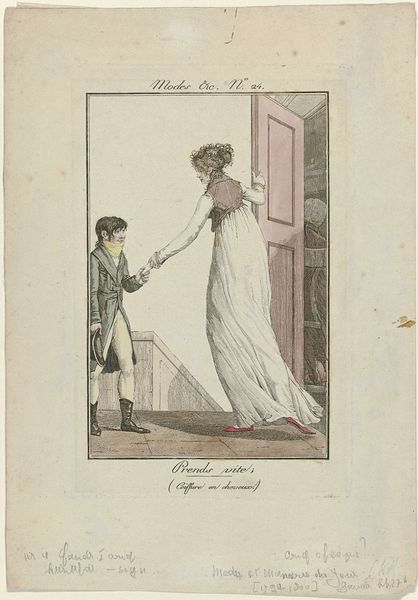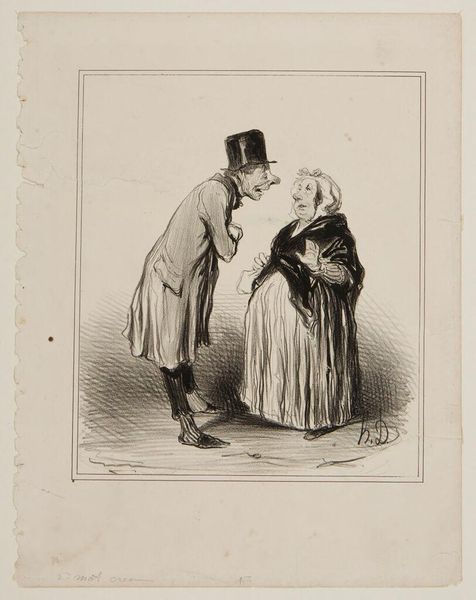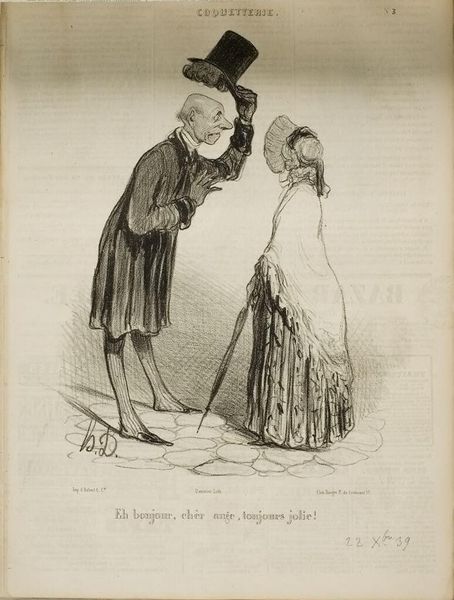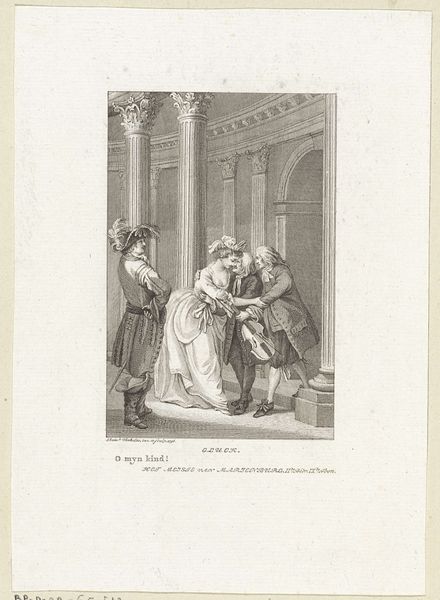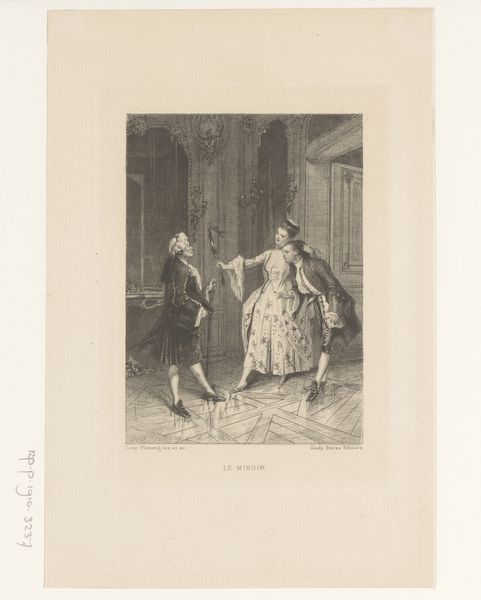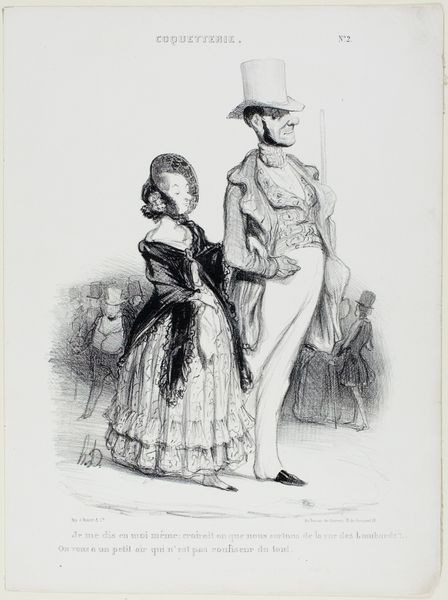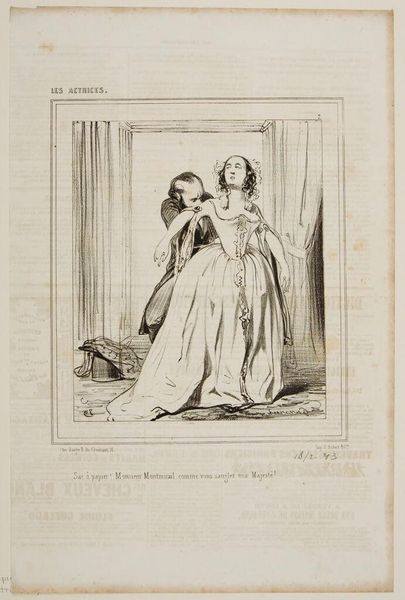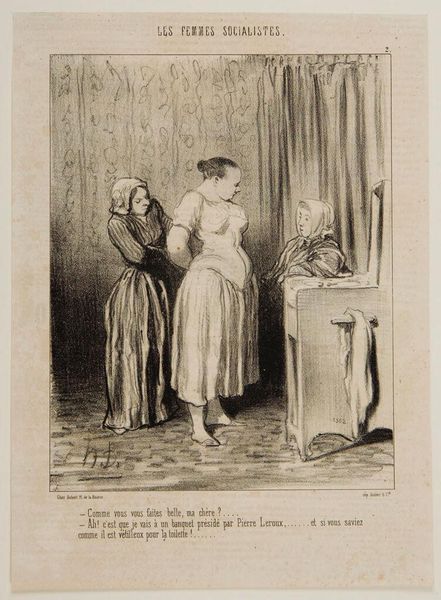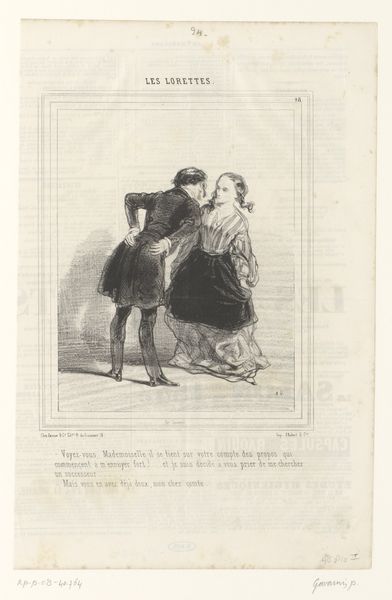
Ontwerp voor illustratie voor De Kolossus der Negentiende Eeuw door P.J. Andriessen (Textill., blz. 57); scène uit het leven van Napoleon 1877 - 1942
0:00
0:00
Dimensions: height 202 mm, width 158 mm
Copyright: Rijks Museum: Open Domain
Editor: This is a pencil drawing by George Lodewijk de Wetstein Pfister, made sometime between 1877 and 1942. It's called "Ontwerp voor illustratie voor De Kolossus der Negentiende Eeuw door P.J. Andriessen (Textill., blz. 57); scène uit het leven van Napoleon". It seems to depict a scene of Napoleon greeting a woman. It has a very romantic feel to me. What do you see in this piece? Curator: I see more than just a romantic encounter; I see a carefully constructed narrative about power and gender in 19th-century society. Consider Napoleon's gesture: the hand kiss. It appears gallant, but it's also a demonstration of authority. He's a military figure, elevated by his status, while the woman appears demure, almost fragile, within the constraints of her social position. What does that dynamic suggest to you about the roles prescribed to men and women in that era? Editor: That's interesting. I hadn't considered it that way. So, the drawing isn't just depicting a scene; it's also making a statement about social inequalities. Curator: Precisely. The artist, even in an illustration, is engaging with the power structures of his time. We need to ask ourselves: Is he critiquing them, or simply reflecting them? What can we deduce from the composition and the body language about societal expectations, and about who benefits from this carefully orchestrated dance of power? Think about what Napoleon's presence, even in pictorial form, would have signified to audiences then. Editor: It changes my perspective completely. It’s like looking at a snapshot of a very complicated relationship between men and women in the 19th century, coded with social messaging. Curator: Exactly. It’s a testament to how even seemingly simple drawings can reveal complex social and political landscapes. We often accept that gender roles are somehow fixed; the work urges us to dismantle these very concepts, showing the historical context that generated these values. What’s most important is what that reflection provokes in us today.
Comments
No comments
Be the first to comment and join the conversation on the ultimate creative platform.
